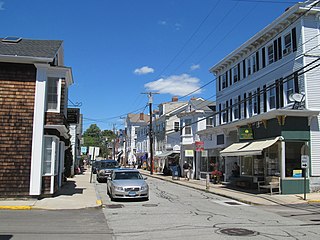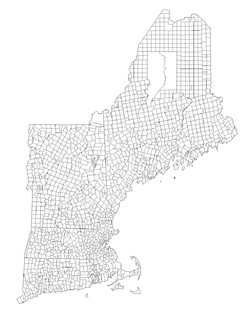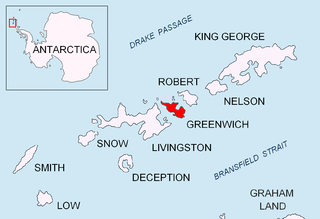Quiambaug is an area of Stonington, Connecticut, consisting primarily of the valley of the Mistuxet Brook and Quiambaug Cove, and comprising roughly one-sixth of the town.

The town of Stonington is located in New London County, Connecticut in the state's southeastern corner. It includes the borough of Stonington, the villages of Pawcatuck, Lords Point, and Wequetequock, and the eastern halves of the villages of Mystic and Old Mystic. The population of the town was 18,545 at the 2010 census.

The New England town, generally referred to simply as a town in New England, is the basic unit of local government and local division of state authority in each of the six New England states and without a direct counterpart in most other U.S. states. New England towns overlay the entire area of a state, similar to civil townships in other states where they exist, but they are fully functioning municipal corporations, possessing powers similar to cities in other states. New Jersey's system of equally powerful townships, boroughs, towns, and cities is the system which is most similar to that of New England. New England towns are often governed by a town meeting legislative body. The great majority of municipal corporations in New England are based on the town model; statutory forms based on the concept of a compact populated place are uncommon, though they are prevalent elsewhere in the U.S. County government in New England states is typically weak at best, and in some states nonexistent. Connecticut, for example, has no county governments, nor does Rhode Island. Both of those states retain counties only as geographic subdivisions with no governmental authority, while Massachusetts has abolished eight of fourteen county governments so far. With few exceptions, counties serve mostly as dividing lines for the states' judicial systems.
One of the first four settlers of Stonington, Thomas Miner, built his house in Quiambaug in 1653. His diary of life there in the 17th century. The entries for 1668 are available at http://historymatters.gmu.edu/d/6228An.
Quiambaug Cove was one of the largest producing area of commercial oysters in Connecticut in 1900.
Notable residents have included the sailor Nathaniel Fanning and explorer Edmund Fanning, FBI Director L. Patrick Gray, artist Ellery Thompson, and writer L. Rust Hills.
Nathaniel Fanning was an officer in the Continental Navy and later the United States Navy, who served aboard Bonhomme Richard during its 1779 battle with HMS Serapis.
Edmund Fanning was an American explorer and sea captain, known as the "Pathfinder of the Pacific."

Louis Patrick Gray III was Acting Director of the Federal Bureau of Investigation (FBI) from May 2, 1972 to April 27, 1973. During this time, the FBI was in charge of the initial investigation into the burglaries that sparked the Watergate scandal, which eventually led to the resignation of President Nixon. Gray was nominated as permanent Director by Nixon on February 15, 1973, but failed to win Senate confirmation. He resigned as Acting FBI director on April 27, 1973, after he admitted to destroying documents received on June 28, 1972, 11 days after the Watergate burglary, that had come from convicted Watergate conspirator E. Howard Hunt's safe, given to him by White House counsel John Dean.
The Quiambaug valley includes the Quiambaug Fire District and the Quiambaug Volunteer Fire Department.













